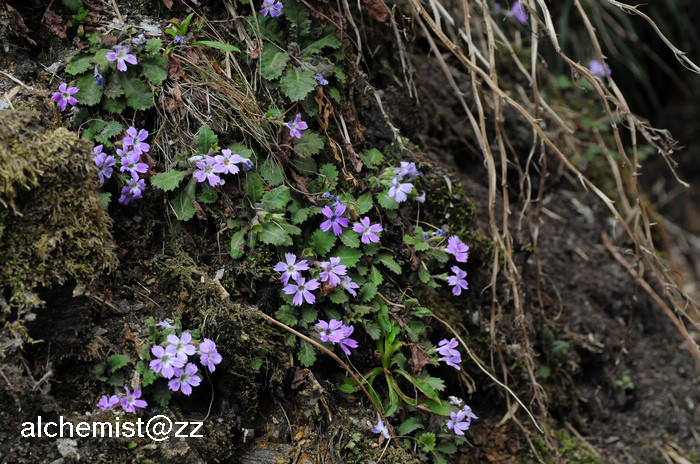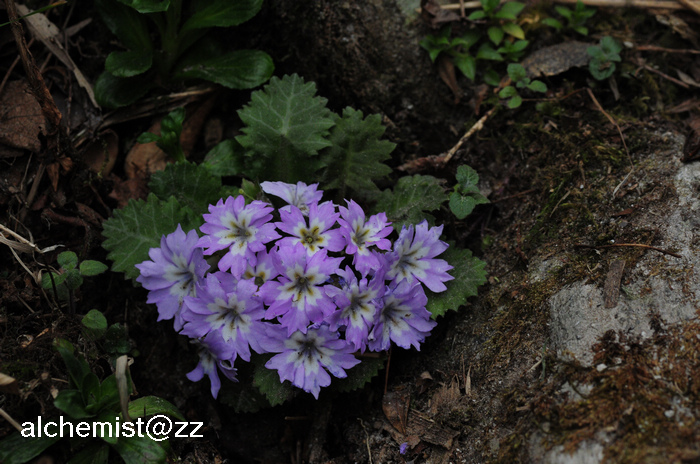大理报春 Primula taliensis
- Scientific Name: Primula taliensis Forrest
- Ref: Notes Roy. Bot. Gard. Edinburgh 4(19):220, t.32. 1908
- Chinese Common Name: 大理报春 Dàlǐ bàochūn
- Family: Primulaceae
- Genus: Primula
- Distribution: Grassy slopes, open forests, Tsuga forests; 2200–3300 m. W Yunnan [N Myanmar]
- Photo: 04/04/2012, Mt. Gaoligong, Yunnan
Herbs perennial, farinose or efarinose. Leaves variable, 2--10 X 1--4 cm, enlarging to 20 cm at fruiting. Outer leaves spatulate to obovate-spatulate, tapering to base forming a short, broadly winged petiole, short appressed pubescent, margin crenate to dentate, apex rounded. Petiole of inner leaves 1--2 X as long as leaf blade; leaf blade ovate-rotund to reniform, 1.5--4 cm wide, base short cuneate to rounded or cordate, margin deeply dentate to dentate-lobulate. Scapes 1--6 cm, ca. as long as to longer than leaf rosette at fruiting, copiously pilose; umbel solitary, 2- to many flowered; bracts lanceolate, 3--7 mm. Pedicel 1--3 cm, pilose. Flowers heterostylous. Calyx campanulate, 5--9 mm, pilose, parted to 1/3; lobes ovate to broadly lanceolate, margin occasionally denticulate, apex subacuminate to acute. Corolla white or purplish rose to purple-blue; tube 0.9--1.1 cm, sparingly pubescent outside, glabrous inside; limb 1.5--2 cm wide; lobes broadly obovate, 3-toothed. Pin flowers: stamens 3--4 mm above base of corolla tube; style nearly as long as tube. Thrum flowers with positions reciprocal. Capsule subglobose, included in calyx, disintegrating at maturity. (Flora of China)

04/04/2012, Mt. Gaoligong, Yunnan
